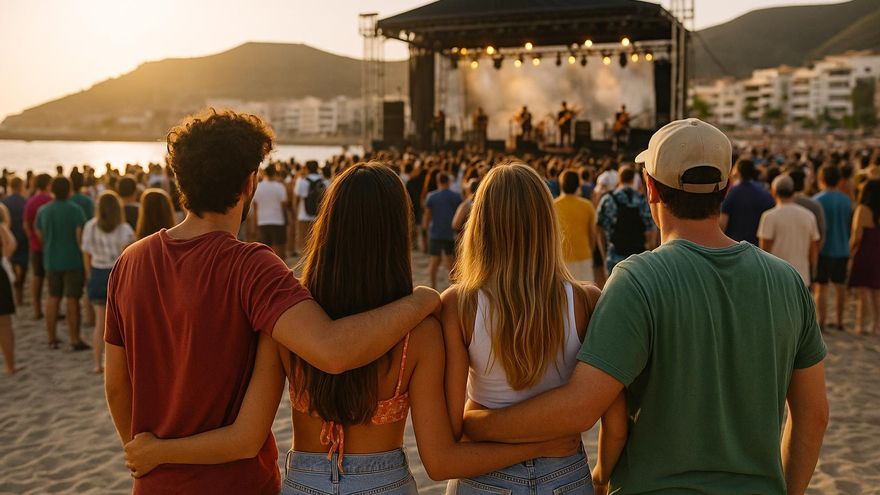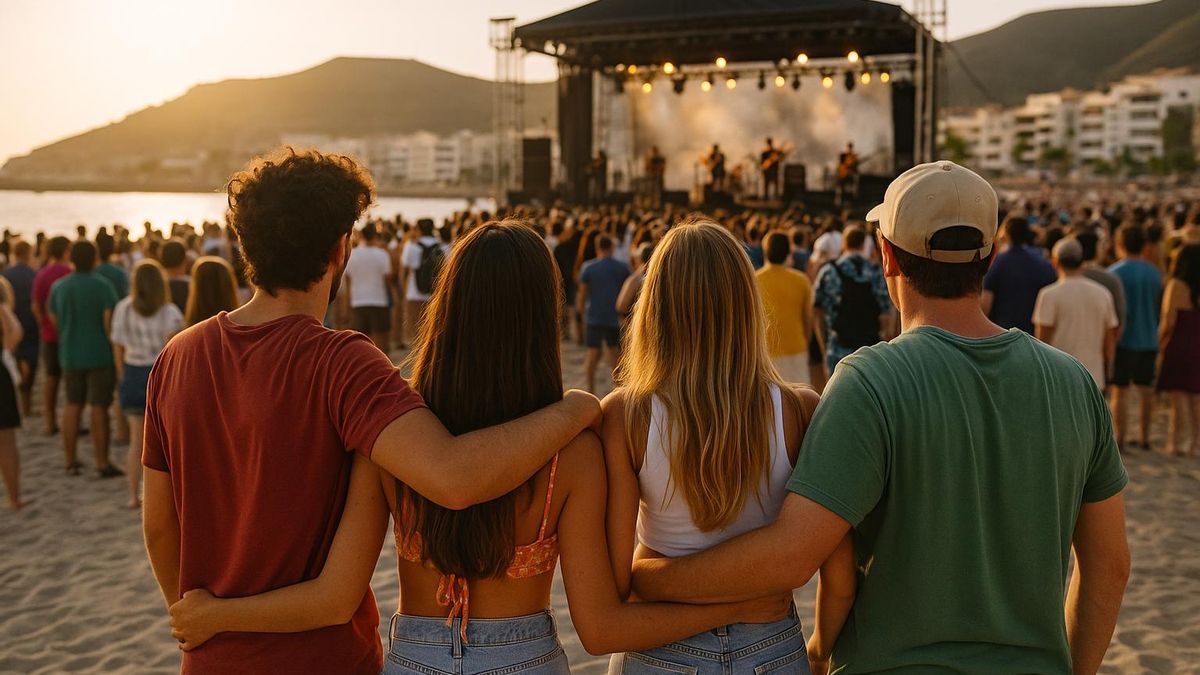Son Latinos: The First Major Festival in the Canary Islands

In the late 1990s, at a time when large concerts on the island were rare, let alone festivals, Tenerife knew what it was like to witness a sea of people dancing by the Atlantic.
A giant stage on the sand, free entry thanks to institutional support, Spanish artists, and those from across Ibero-America, as well as thousands of towels and umbrellas set out on the beach from the morning—this was the essence of a musical gathering.
This grand yet straightforward format, even broadcast by Televisión Canaria, turned an event in the south of the island into one of the largest outdoor music gatherings in the Canary Islands over six editions: Son Latinos, at the Playa de Las Vistas in Los Cristianos.
The Birth of the Festival
The inaugural edition was held on 29 August 1998, organised by Guagua Producciones, with sponsorship from the Government of the Canary Islands, the Cabildo of Tenerife, and the Arona City Council. It was conceived from the outset as a major free concert featuring Latin music “from here and beyond”.
The project was led by producer Leopoldo Mansito (father of promoter Leo Mansito, who created other festivals like Granca Live Fest), with journalist Martín Rivero involved in the organisation.
In addition to the musical marathon, Son Latinos offered a cultural programme and was supported by a Committee of Honour, presided over in 2000 by José Saramago, when the Son Latinos Award was established, awarded that year to Mario Benedetti.
Looking Back Year by Year
- 1998 — 150,000 attendees at the debut: 16 artists from Spain and America (Fito Páez, Andrés Calamaro, Jerry Rivera, Pedro Guerra…) performing for over eight hours.
- 1999 — The pre-event discussions spoke of the “great farewell to summer” with over 15 performances (Compay Segundo, Francisco Céspedes, Willy Chirino, Pedro Guerra, Hevia…).
- 2000 — Over 200,000 attendees expected, more than 10 hours of music (Carlos Vives, Ketama, Lucrecia…) with a focus on “prioritising quality”, which attracted Saramago to the festival’s Committee of Honour that year.
- 2001 — Nearly 200,000 attendees, with Paulina Rubio as the main draw (her performance is remembered on the island for her near-falls rather than devotion). Other acts included Ariel Rot, La Oreja de Van Gogh, José Feliciano… at a party that ended at dawn.
- 2002 — Attendance reached 300,000, according to the organisers. The audience was attracted by Chayanne (in the midst of the “Torero” boom), Juanes, Los Van Van, Patricia Manterola, Miguel Ríos, La Mosca, Miami Sound Machine, among others. The festival once again included cultural activities and its Son Latinos Award (that year to Carlos Fuentes).
- 2003 — A 12-hour mega-concert featuring Maná, Manu Chao, Carlinhos Brown, Óscar D’León, Seguridad Social, Las Niñas, Antonio Orozco…. Reports state that 300,000 people “spent the night” on the beach for the finale.
In total, over one million attendees enjoyed the best Spanish music of those years.
Why Did It Stop?
The seventh edition in 2004 was cancelled. The General Directorate of Coasts denied permission to use Las Vistas, citing environmental concerns, as reported by the promoters.
Years later, when attempting to revive the format, these reasons were cited to deny its return.
Environmental groups had been alerting to the impact of the mega-concert on an urban beach with a Blue Flag status since the concept’s inception. Issues like mass waste and damage to the immediate surroundings came to the forefront during the failed attempt to reorganise “Son Latinos” in 2014, which did not receive authorisation from the Coasts Department.
Its Legacy
Son Latinos was not just a festival; it was a historical precedent: long before the Canary Islands hosted events like Granca Live Fest, Cook Music Fest, Sunblast, or even WOMAD in Gran Canaria, it had already proven that the islands could gather hundreds of thousands of people around music.
For six summers, Las Vistas transformed into a stage as monumental as it was unforgettable, and although environmental and bureaucratic tides ultimately silenced it, its echo still resonates as the first major mega-festival in the Canary Islands, paving the way for everything that followed.














